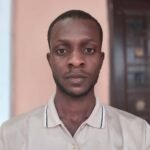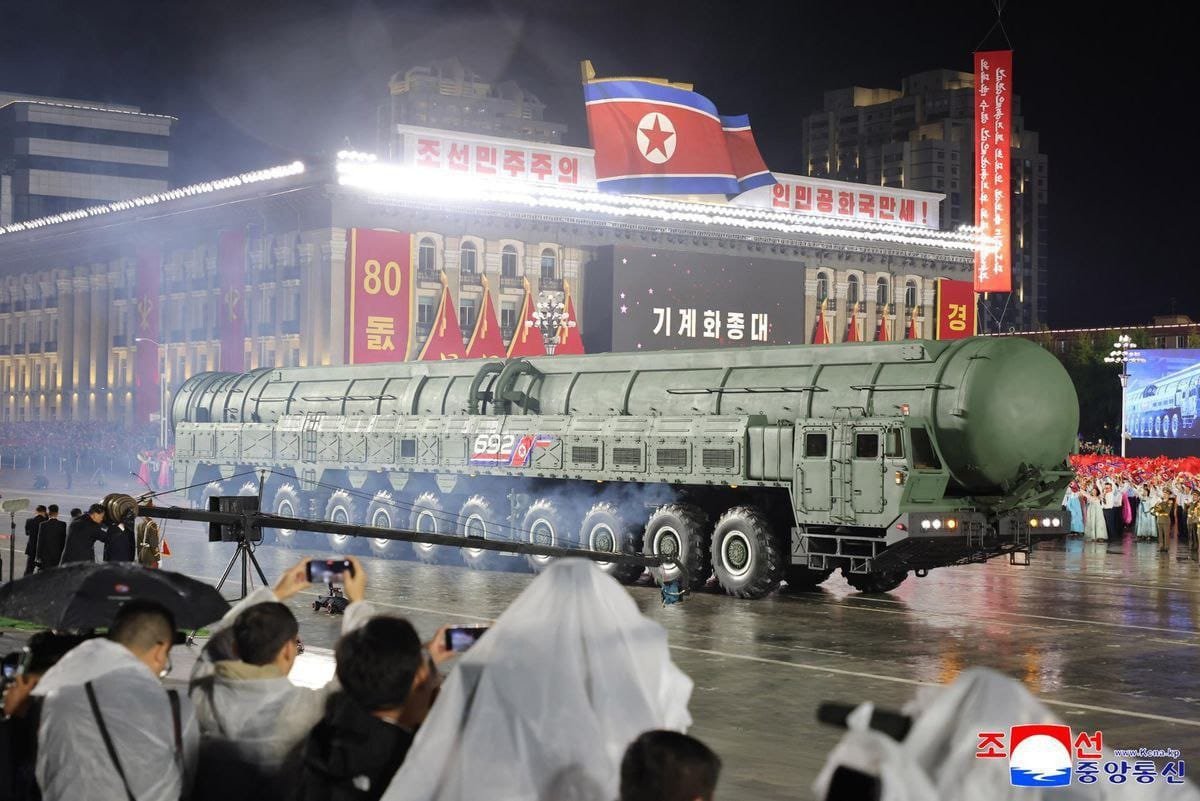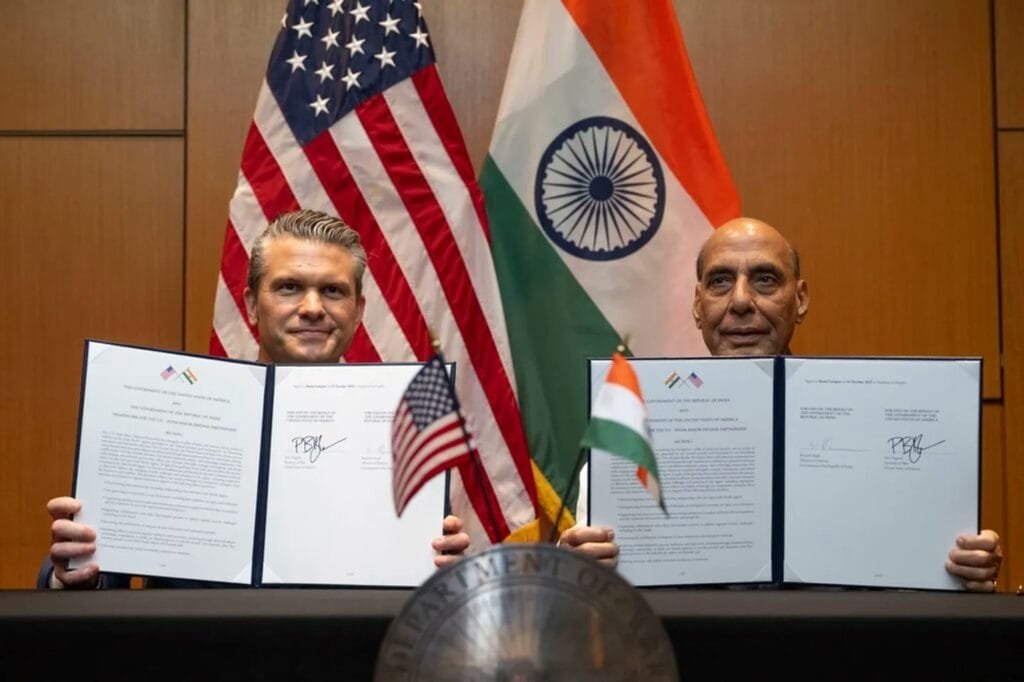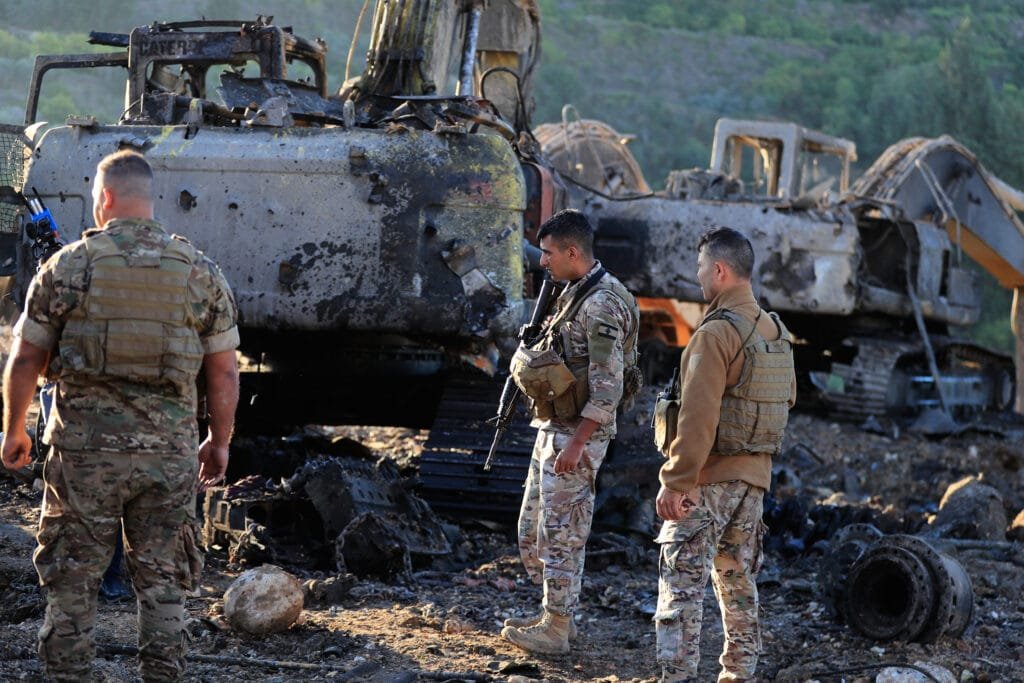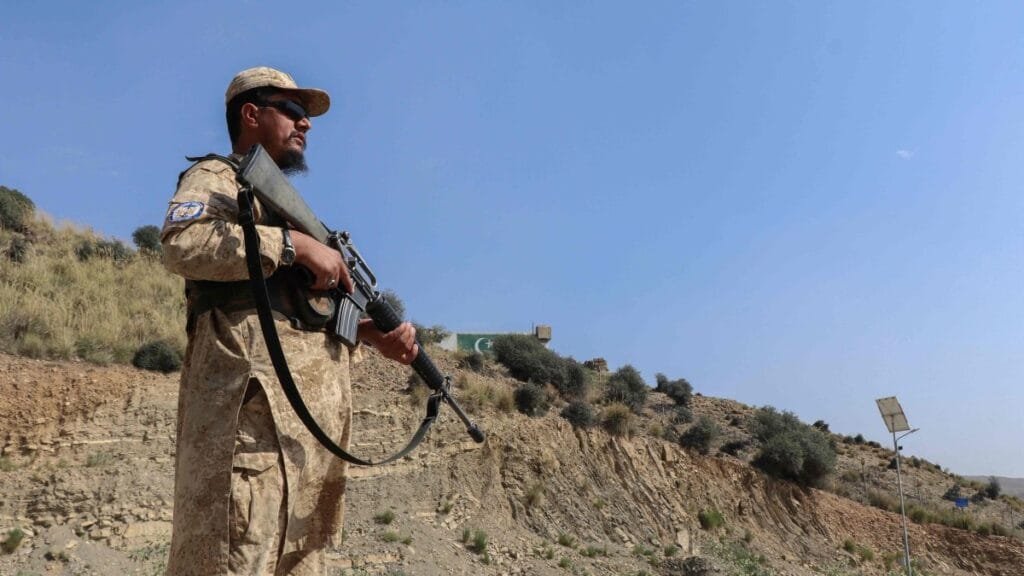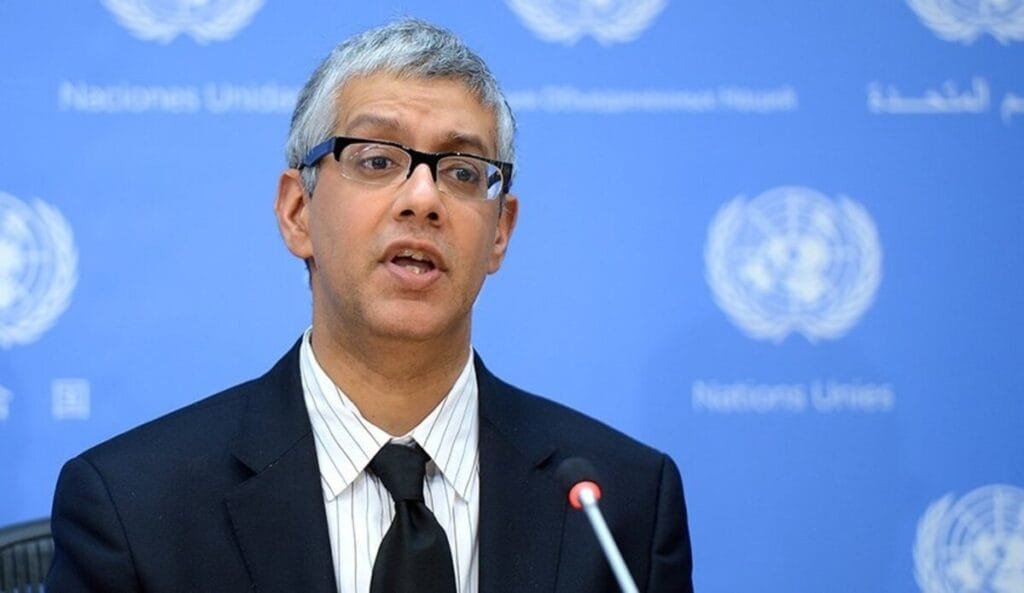Pyongyang — North Korea marked the 80th anniversary of its ruling Workers’ Party with a lavish military parade in Pyongyang on Friday, during which leader Kim Jong Un presided over the unveiling of the Hwasong-20, a reportedly new and more powerful intercontinental ballistic missile (ICBM).
State media described the Hwasong-20 as the regime’s “strongest nuclear strategic weapon system,” presented atop an imposing 11-axle transporter-erector-launcher (TEL) amid displays of hypersonic missiles, drone launch vehicles, and cruise missiles. While the missile has not yet been flight-tested, analysts note it is likely powered by a newly ground-tested solid-fuel rocket engine said to produce over 1,970 kilonewtons of thrust — a step up from North Korea’s previous designs.
Foreign dignitaries observed the parade, including Chinese Premier Li Qiang, Russian security representative Dmitry Medvedev, and Vietnam’s Communist Party chief To Lam, signaling Pyongyang’s effort to strengthen diplomatic ties amid escalating tensions with the United States and its allies. During his address, Kim urged the military to evolve into an “invincible entity that destroys all threats,” praising troops who had served abroad—particularly those deployed in support of Russia’s operations in Ukraine.
Observers caution, however, that key technical questions remain unresolved, especially concerning the missile’s guidance accuracy, reentry survivability, and whether it can carry multiple warheads (MIRVs) as implied by North Korean media. The Hwasong-20’s unveiling appears to be as much a symbolic assertion of deterrent ambition as a demonstration of emerging capability—intended to pressure Washington and Seoul while reinforcing internal cohesion ahead of challenging diplomatic battles.
In recent weeks, the regime conducted multiple static tests of the missile’s engine, claiming to finalize the ground trials, which many analysts see as laying the groundwork for a possible launch test before year’s end. As the globe watches with concern, the unveiling reaffirms that North Korea continues to place its nuclear and missile development at the core of strategic signaling—and it has upped the ante in a standoff that shows few signs of abating.
